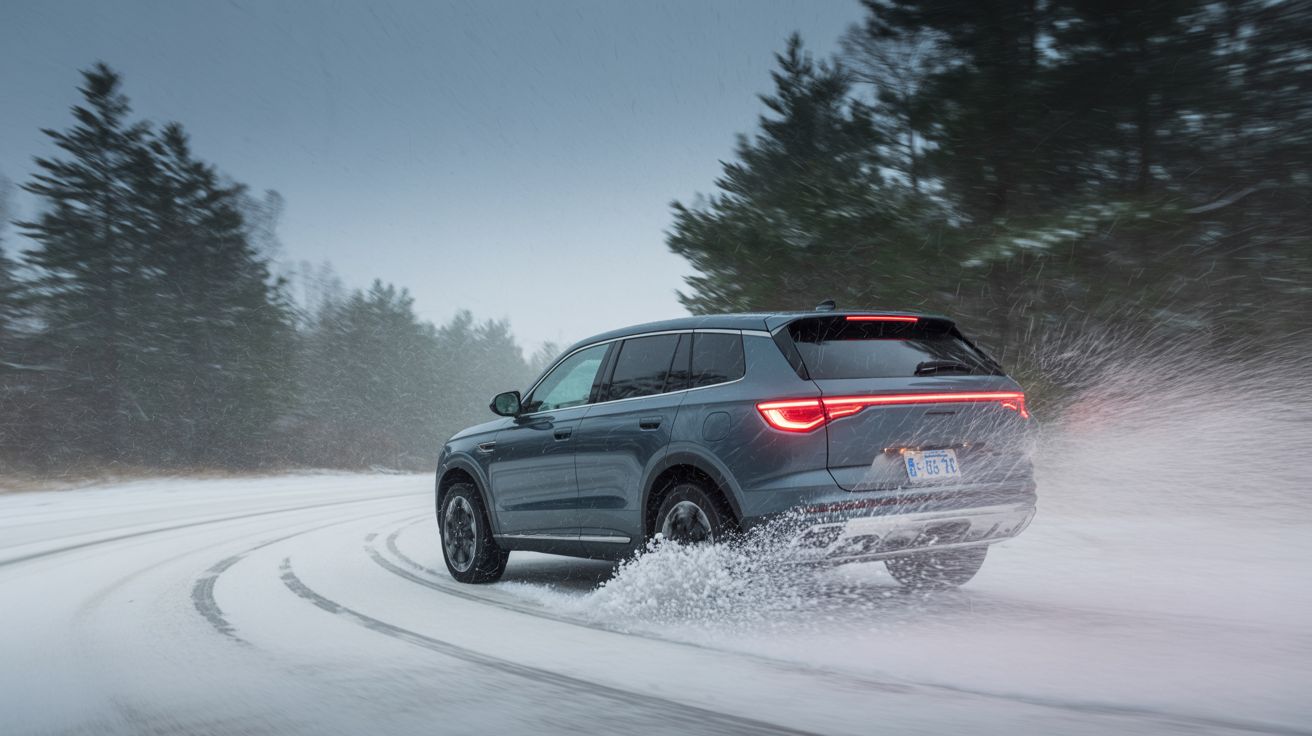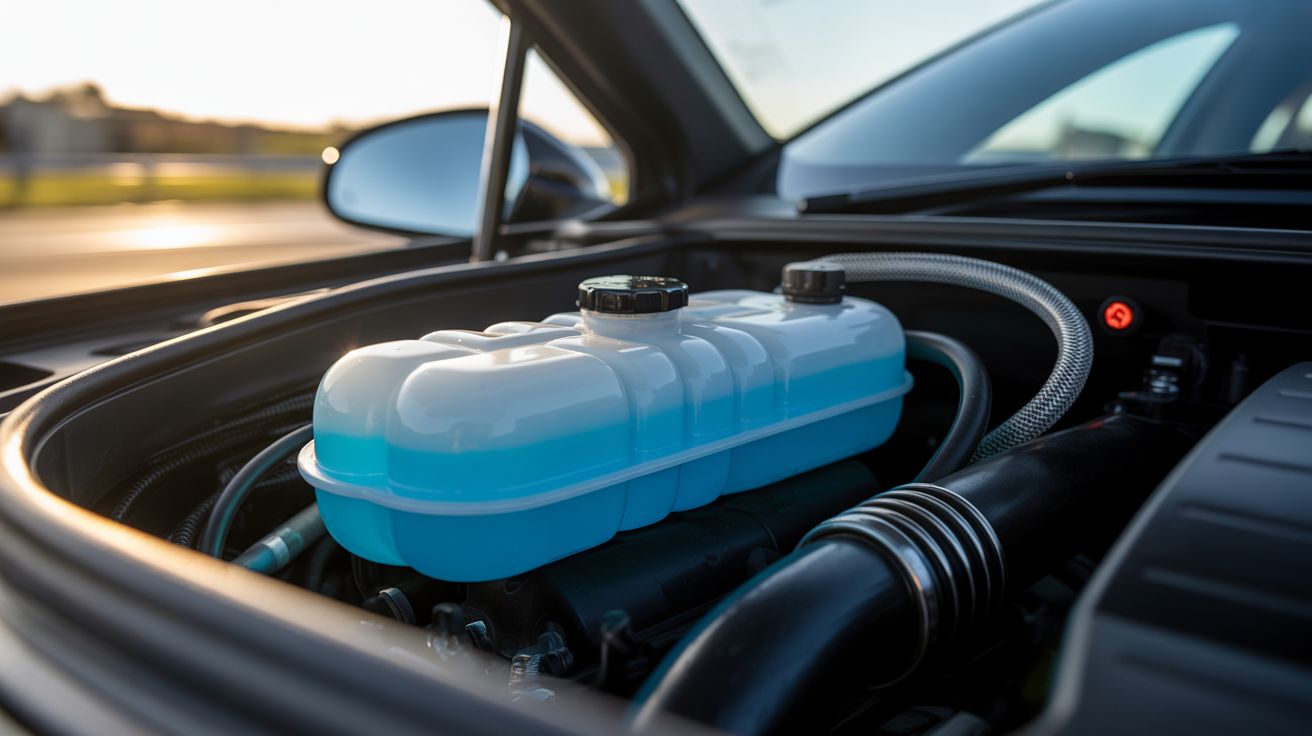The Winter Driving Myth That Gets People Killed
The Illusion of Control: A Deadly Trap
Imagine this: you're cruising down a snow-covered highway, feeling confident in your all-wheel-drive SUV. The roads are slick, but you've got this, right? You've driven in snow before. You tap the brakes a little harder than usual as you approach a slower-moving vehicle, and suddenly, your car is sliding. You pump the brakes, steer into the skid, but nothing seems to work. The car is a runaway sled, and a collision is inevitable. What went wrong? The answer, more often than not, lies in a dangerous myth: the belief that certain features, like all-wheel drive or anti-lock brakes, make you invincible in winter driving conditions.
This false sense of security is a killer. It leads drivers to overestimate their abilities and underestimate the treacherous nature of winter roads. We see it every year: accident rates spike during the first snowfall, not because people suddenly forget how to drive, but because they're lulled into a false sense of security by their cars and their past experiences. Let's debunk this myth and explore the real keys to safe winter driving.
All-Wheel Drive: Capability vs. Invincibility
All-wheel drive (AWD) and four-wheel drive (4WD) are fantastic technologies. They provide superior traction when accelerating, helping you get moving on slippery surfaces. This is especially helpful when starting from a stop on an icy hill or navigating unplowed roads. Many modern cars, including electric cars, offer AWD as an option, and it can significantly improve your ability to accelerate and maintain momentum in challenging conditions. However, the crucial point is that AWD only helps with acceleration. It does absolutely nothing to improve your braking or steering capabilities.
Think of it this way: AWD helps you go, but it doesn't help you stop or turn. In fact, the added weight of an AWD system can actually slightly increase your stopping distance. The illusion of control that AWD provides can lead drivers to speed up and drive more aggressively than they should, ultimately increasing their risk of an accident. Remember, physics doesn't care what kind of drivetrain you have. Ice is ice, and it reduces traction for everyone.
Anti-Lock Brakes (ABS): A Tool, Not a Magic Wand
Anti-lock brakes (ABS) are another valuable safety feature, standard on virtually all modern cars. ABS prevents your wheels from locking up during hard braking, allowing you to maintain steering control while slowing down. This is a significant improvement over older braking systems, where locked wheels would cause the car to skid uncontrollably. However, ABS is not a magic wand that instantly stops your car on ice. It simply allows you to steer while braking, giving you a chance to avoid obstacles.
The effectiveness of ABS is still limited by the amount of available traction. On a sheet of ice, even with ABS, your stopping distance will be significantly longer than on dry pavement. Many drivers mistakenly believe that ABS will stop them instantly, leading them to brake too late and still end up in an accident. It's crucial to understand how ABS works and to adjust your driving accordingly. Practice braking in a safe, controlled environment (like an empty parking lot covered in snow) to get a feel for how your car behaves with ABS in slippery conditions.
Tires: The Only Thing Between You and the Road
Your tires are the single most important factor in winter driving safety. They are the only point of contact between your car and the road, and their condition directly affects your traction, braking, and steering. All-season tires are a compromise, designed to perform adequately in a variety of conditions. However, they are not ideal for severe winter weather. Winter tires, also known as snow tires, are specifically designed for cold temperatures and snowy or icy conditions. They have a special rubber compound that stays flexible in cold weather and a tread pattern that provides superior grip on snow and ice.
Investing in a set of winter tires is the single best thing you can do to improve your winter driving safety. The difference in performance between all-season tires and winter tires in snowy or icy conditions is dramatic. Think of it like wearing the right shoes for the activity. You wouldn't wear sandals to go hiking, would you? Similarly, you shouldn't rely on all-season tires in the dead of winter. Even with AWD and ABS, your car's performance will be severely limited if you're running on inadequate tires. Consider this a critical investment in your safety and the safety of others on the road.
Speed: The Enemy of Control
Speed is a major contributing factor to winter accidents. Even if you have AWD, ABS, and winter tires, driving too fast for the conditions will significantly increase your risk of losing control. The faster you're going, the less time you have to react to unexpected hazards, and the longer it takes to stop. Remember, stopping distances are significantly longer on snow and ice, even with the best tires and braking systems. Adjust your speed to the road conditions. If the roads are snowy or icy, slow down significantly. There's no shame in driving slower than the posted speed limit if it's necessary to maintain control.
It's also important to maintain a safe following distance. Give yourself plenty of space between you and the car in front of you. This will give you more time to react if the car ahead of you brakes suddenly or loses control. A good rule of thumb is to double or triple your normal following distance in winter conditions. Patience is key. Arriving a few minutes late is far better than arriving in an ambulance.
Braking and Steering Techniques: Smoothness is Key
In winter driving, smoothness is paramount. Avoid sudden acceleration, braking, and steering maneuvers. These abrupt actions can easily upset the balance of your car and cause you to lose control. When braking, apply the brakes gently and gradually. If you have ABS, you can apply firm, steady pressure to the brake pedal. If you don't have ABS, pump the brakes gently to avoid locking up the wheels. When steering, make smooth, deliberate movements. Avoid jerky or sudden turns. If your car starts to skid, steer gently in the direction you want to go. This is often counterintuitive, but it's the most effective way to regain control.
Practice these techniques in a safe, controlled environment before you need them in a real-world situation. Find an empty parking lot covered in snow or ice and practice braking, steering, and recovering from skids. This will help you develop the muscle memory and reflexes you need to react quickly and effectively in an emergency. Remember, winter driving requires a different set of skills than driving on dry pavement. Take the time to learn and practice these skills, and you'll be much better prepared for the challenges of winter driving.
Vehicle Maintenance: Preparing for the Cold
Proper vehicle maintenance is crucial for safe winter driving. Before the winter season begins, have your car inspected by a qualified mechanic. Check your battery, tires, brakes, fluids, and lights. Make sure your battery is in good condition, as cold weather can significantly reduce its performance. Ensure your tires have adequate tread depth and are properly inflated. Check your brake pads and rotors for wear and tear. Top off your fluids, including antifreeze, windshield washer fluid, and oil. Make sure all your lights are working properly, including your headlights, taillights, brake lights, and turn signals.
In addition to regular maintenance, it's also a good idea to keep an emergency kit in your car during the winter months. This kit should include items such as a flashlight, jumper cables, a first-aid kit, a blanket, a shovel, sand or kitty litter (for traction), and some non-perishable food and water. Being prepared for the unexpected can make a big difference if you get stranded in cold weather. Regular maintenance and a well-stocked emergency kit can help you avoid breakdowns and stay safe on the road.
Beyond the Car: Planning and Awareness
Safe winter driving isn't just about your car and your driving skills. It's also about planning ahead and being aware of your surroundings. Before you head out on a trip, check the weather forecast and road conditions. If the weather is bad, consider postponing your trip or taking an alternate route. Let someone know your route and estimated time of arrival. This way, if you get stranded, someone will know where to look for you. Be aware of your surroundings while you're driving. Watch out for black ice, which is a thin, transparent layer of ice that can be very difficult to see. Be especially cautious on bridges and overpasses, as they tend to freeze more quickly than other road surfaces.
Pay attention to other drivers on the road. Be prepared for them to make mistakes. Don't assume that other drivers are as skilled or as prepared as you are. Be patient and courteous. Remember, everyone is just trying to get to their destination safely. By planning ahead, being aware of your surroundings, and being considerate of other drivers, you can significantly reduce your risk of an accident and make winter driving a safer experience for everyone. And remember, even the most advanced automotive technology in electric cars or gas cars can't overcome poor planning and reckless driving.
Conclusion: Debunking the Myth and Embracing Reality
The myth that certain car features make you invincible in winter is a dangerous one. It leads to overconfidence, reckless driving, and ultimately, accidents. All-wheel drive, anti-lock brakes, and other safety features are valuable tools, but they are not substitutes for good driving skills, proper tires, and careful planning. The reality is that winter driving is inherently more dangerous than driving on dry pavement. It requires a different set of skills, a different mindset, and a healthy dose of respect for the conditions.
Let's commit to debunking this myth and embracing the reality of winter driving. Let's educate ourselves and others about the real keys to safe winter driving: proper tires, reduced speed, smooth driving techniques, vehicle maintenance, and careful planning. By doing so, we can make our roads safer for everyone this winter. Don't let a false sense of security put you or others at risk. Take control of your safety and drive responsibly this winter. Share this article with your friends and family to help spread the word and save lives. What steps will you take today to prepare for winter driving?



